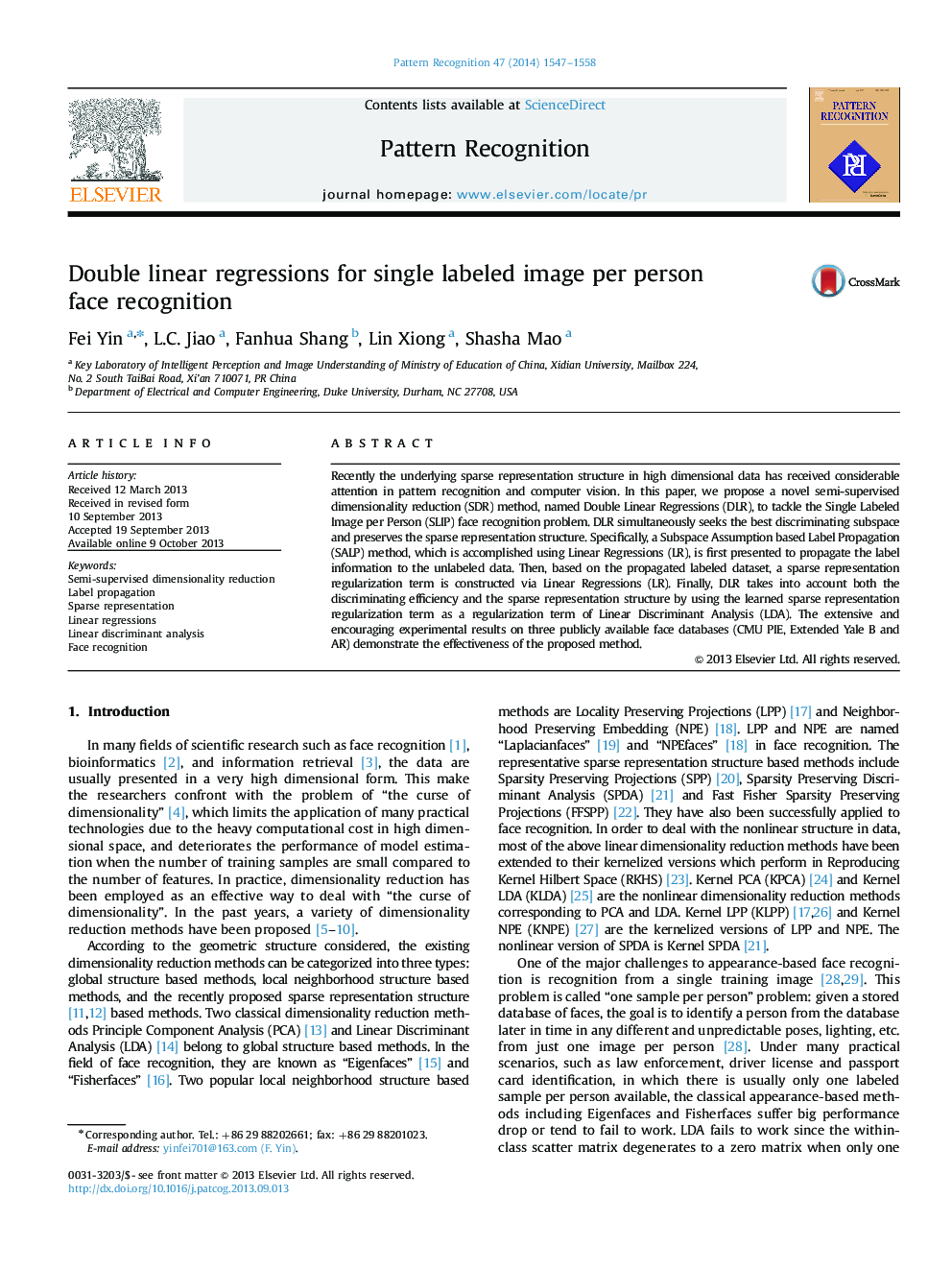| Article ID | Journal | Published Year | Pages | File Type |
|---|---|---|---|---|
| 532058 | Pattern Recognition | 2014 | 12 Pages |
•DLR seeks the best discriminating subspace and preserves the sparse structure.•DLR uses label information to learn a more discriminative sparse structure.•Sparse coefficient vector is quickly computed by class specific linear regression.•The difficulty of selecting graph construction parameters is avoided in DLR.•Promising experimental results on three public face datasets are presented.
Recently the underlying sparse representation structure in high dimensional data has received considerable attention in pattern recognition and computer vision. In this paper, we propose a novel semi-supervised dimensionality reduction (SDR) method, named Double Linear Regressions (DLR), to tackle the Single Labeled Image per Person (SLIP) face recognition problem. DLR simultaneously seeks the best discriminating subspace and preserves the sparse representation structure. Specifically, a Subspace Assumption based Label Propagation (SALP) method, which is accomplished using Linear Regressions (LR), is first presented to propagate the label information to the unlabeled data. Then, based on the propagated labeled dataset, a sparse representation regularization term is constructed via Linear Regressions (LR). Finally, DLR takes into account both the discriminating efficiency and the sparse representation structure by using the learned sparse representation regularization term as a regularization term of Linear Discriminant Analysis (LDA). The extensive and encouraging experimental results on three publicly available face databases (CMU PIE, Extended Yale B and AR) demonstrate the effectiveness of the proposed method.
